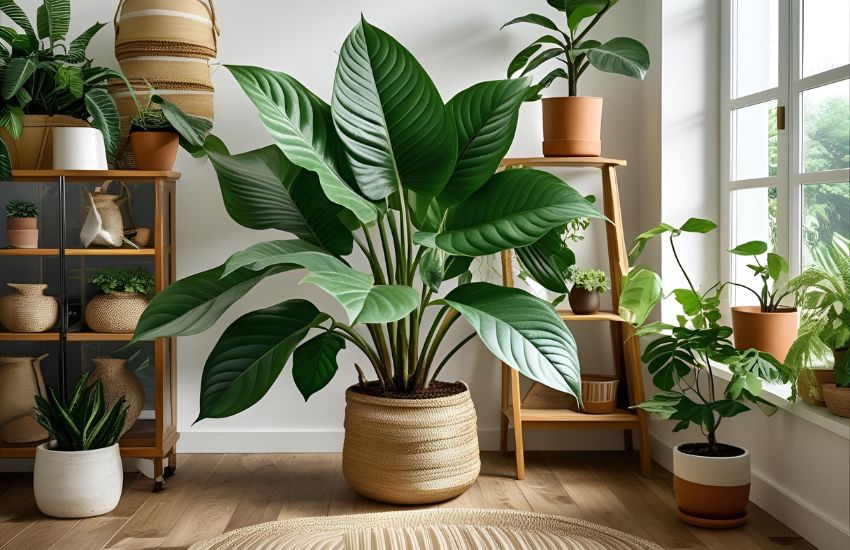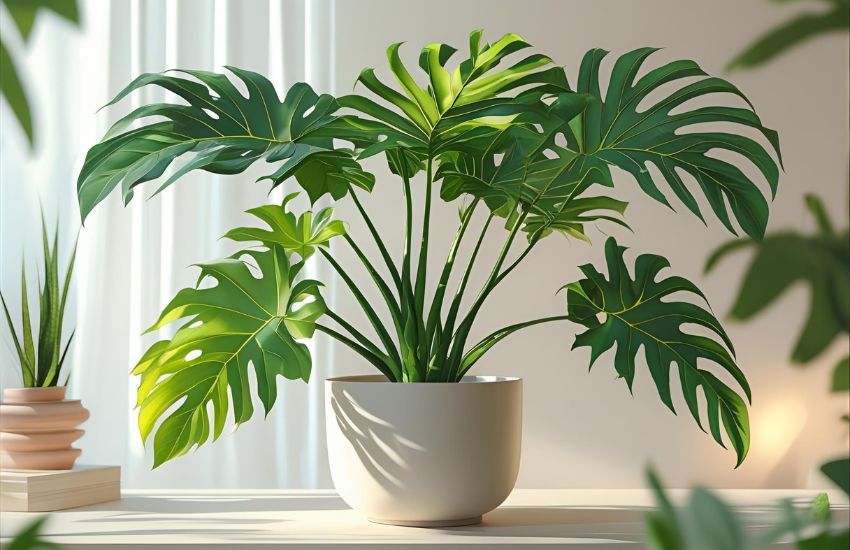Looking to add a striking pop of natural beauty to your indoor space? The Big Leaf Fittonia plant offers exactly that—with its lush green leaves and bold veined patterns, this eye-catching houseplant brings depth, texture, and elegance into any room. Whether placed in a decorative pot on your desk or as part of a terrarium arrangement, this plant is more than just décor—it’s a statement of vibrant, living design.
Bring life indoors with the Big Leaf Fittonia plant, a stunning choice for natural beauty. Its vibrant, veined foliage adds a refreshing pop of color to any space. Perfect for low-light areas, this plant thrives with regular misting and loves high humidity. A low-maintenance option, it brings calm, elegance, and tropical charm into your home.
In this blog post, you’ll explore how to style and care for Big Leaf Fittonias, learn practical ways to help them thrive in your home, and discover why their lush foliage and dark green charm make them a favorite among indoor plant lovers.
How to Care for Big Leaf Fittonia and Nerve Plant Varieties in Pots

Caring for Fittonia, also known as the nerve plant, requires a gentle, attentive approach that respects its tropical origins. With striking dark green leaves patterned by delicate white veins, pink veins, or red vein accents, this mosaic plant adds a vibrant touch to any indoor plant collection. To help it thrive in pots, place it in a spot with indirect light, avoiding harsh sun exposure that can scorch its foliage. Fittonia prefers a consistently humid environment, so regular misting or the use of a humidity tray is highly recommended. This plant also appreciates warmth and high humidity, making bathrooms or kitchens ideal locations.
Use well-draining soil and always ensure proper drainage in the pot to prevent root rot. Water the plant thoroughly but allow the top inch of soil to dry out between waterings. Fittonia is sensitive to both underwatering and overwatering—if the leaves go limp or turn yellow, it’s a signal to adjust your watering habits. During the growing season, a balanced liquid fertilizer once a month will support lush growth without overwhelming the roots.
Known for its expressive leaves and quick recovery from wilting, Fittonia verschaffeltii is a low-growing beauty that rewards careful attention with year-round charm. Its veined patterns bring texture and movement to any room, making it a beloved favorite for those who love nurturing indoor greenery.
Common Problems with Fittonia Albivenis and Verschaffeltii in Low Humidity

Fittonia Albivenis and Fittonia verschaffeltii are beloved for their vivid, veined foliage and delicate structure, often showing off bright white veins, pinkish-red accents, or even the striking contrast of white than green patterns. These leaf plants, native to tropical rainforests, require careful attention to moisture and light to truly thrive indoors. However, when humidity levels drop, even experienced plant enthusiasts may notice common problems that affect both health and appearance.
Signs of Low Humidity Stress
When kept in dry air, Fittonias may develop leaf drop, curled leaf tips, or dull, lifeless color. Once-vibrant bright green leaves or soft pink leaves may start to crisp or fade, especially in areas with air conditioning or winter heating. Some plants may begin to grow small leaves or lose their signature lushness.
Soil and Watering Issues
In low humidity, it’s tempting to overwater to compensate for dryness. Unfortunately, this often leads to root rot, especially in containers without proper drainage or with a poor potting mix. Fittonias like their soil consistently moist, but never soggy. Always water when the top layer feels dry, and avoid letting the soil too dry between waterings. A tray filled with water beneath the pot can help maintain local humidity without oversaturating the roots.
Light and Leaf Sensitivity
Fittonia varieties prefer low to medium light, making them ideal for low-light corners or hanging baskets. However, placing them in direct sunlight can scorch the leaves and accelerate moisture loss. Be mindful of light levels and avoid windows with harsh exposure. In balanced conditions, plants like the Pink Angel or Fittonia mosaic show off their colors best.
Recovery and Propagation Tips
If your plant suffers due to low humidity, don’t panic. Prune any damaged parts and take a healthy cutting for propagation—Fittonia roots easily in water or soil. This also helps refresh growth and encourages a fuller shape. Adding your plant to a closed terrarium or surrounding it with other moisture-loving species in your indoor garden can also create a stable microclimate.
Fertilizing and Growth
To support recovery, fertilize lightly during active growth months, but avoid heavy feeding while the plant is stressed. Healthy Fittonias reward patience with dense clusters of small dark green leaves or dramatic white leaves edged in emerald green.
Conclusion
In conclusion, Fittonia Albivenis and Verschaffeltii are stunning indoor plants that demand thoughtful care, especially in drier environments. Since this plant loves high humidity, low moisture levels can quickly trigger signs of distress—from turning brown leaf edges to limp stems. Simple habits like regular misting, checking for excess water, and letting water to drain properly will help you maintain your Fittonia’s vibrant appearance. It’s also essential to avoid direct sunlight, as intense rays can dry and damage the foliage. When needed, mist the leaves gently and provide light feedings with a quality houseplant fertilizer. Watch for pests like mealybug or spider mites, especially when the plant is stressed.
Whether placed in a terrarium, tabletop pot, or hanging basket, Fittonias like the ‘White Tiger’ thrive with consistent care. Don’t let low humidity lead to root rot or leaf loss—adjust your approach with the right watering rhythm and environmental support.
Ready to revive or grow your collection? Add Fittonia to your indoor space today and bring home color, calm, and natural beauty—one leaf at a time.
Frequently Asked Questions (Bring Life Indoors with the Big Leaf Fittonia Plant for Natural Beauty)
Is Fittonia a lucky plant?
Yes, Fittonia, also known as the nerve plant, is often considered a lucky plant because it symbolizes peace, harmony, and positive energy. Its vibrant patterned leaves are believed to attract calmness and good vibes indoors. Many people keep Fittonia at home or in offices as it enhances beauty, purifies air, and brings a sense of tranquility.
Is Fittonia a good indoor plant?
Yes, Fittonia is a good indoor plant, especially valued for its vibrant, patterned leaves. It thrives in indirect light and humid conditions, making it perfect for homes and offices. Fittonia also helps purify the air and adds a decorative touch. However, it requires regular watering and care to prevent wilting, as it is sensitive to dryness.
How do you care for a big leaf Fittonia plant?
To care for a big leaf Fittonia plant, place it in bright, indirect light and keep the soil consistently moist but not waterlogged. Maintain high humidity by misting regularly or using a humidifier. Keep temperatures between 18–24°C and avoid drafts. Fertilize monthly during spring and summer with a diluted houseplant fertilizer. Prune to encourage bushy growth.
Does Fittonia like sun or shade?
Fittonia, also known as the nerve plant, thrives best in bright, indirect light rather than direct sunlight. Too much sun can scorch its delicate leaves, while too much shade may cause leggy growth. Ideally, place it in filtered light near a window or under fluorescent lighting to maintain its vibrant leaf patterns and healthy growth.
